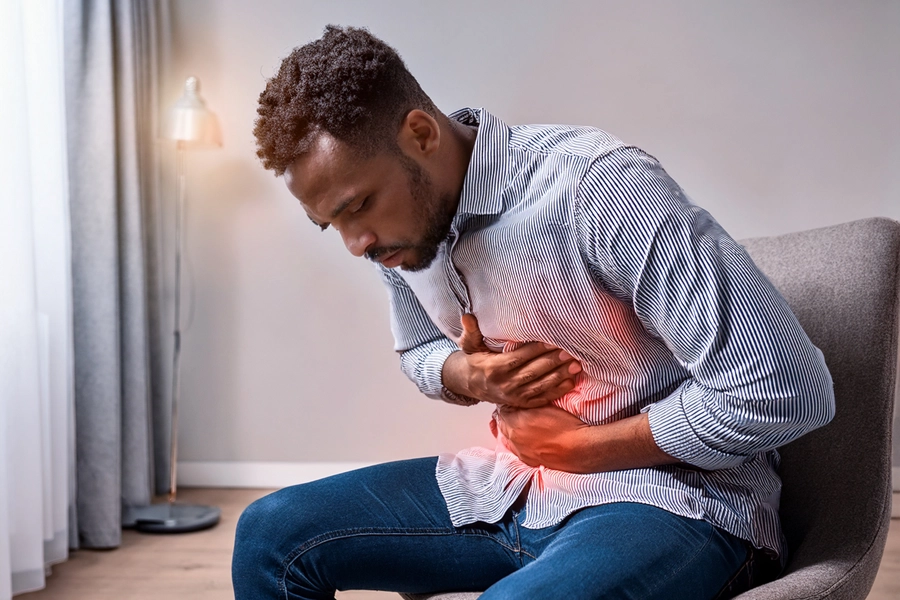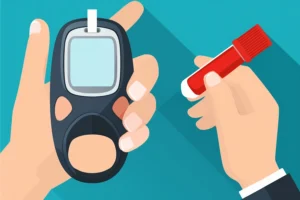In recent months, Norovirus, a highly contagious virus known for causing acute gastroenteritis, has been making alarming headlines across the globe. According to recent data from Japan’s public health institute, the number of infectious gastroenteritis cases caused by norovirus and other pathogens has reached its highest level in a decade.
Meanwhile, in the UK, the situation is similarly concerning. The latest UK Health Security Agency (UKHSA) report reveals that norovirus cases continue to rise, with laboratory-confirmed infections at the highest recorded levels since 2014. From February 3 to 16, 2025, cases surged by 29.4% compared to the previous fortnight and more than doubled the five-season average, soaring to 168% above typical levels for the same period. This surge is a stark reminder of the virus’s rapid transmission potential and the critical need for enhanced public health vigilance, preventive measures and awareness.
In this article, we will take a closer look at this alarming infection, exploring the global impact of norovirus, its symptoms, how it spreads and essential strategies to prevent outbreaks and protect public health.
What is Norovirus?
Norovirus is a highly contagious virus often referred to as the “stomach bug” or “stomach flu,” though it is unrelated to influenza, which is caused by the influenza virus. Instead, norovirus is a leading cause of acute gastroenteritis, a condition characterized by inflammation of the stomach and intestines.1 This virus affects people across all age groups and is responsible for approximately 200,000 deaths worldwide each year.2
Belonging to the Caliciviridae family, norovirus is an RNA-based, non-enveloped virus that spreads rapidly in both healthcare and community settings, contributing to widespread illness. It was first identified as a human pathogen during an outbreak in Norwalk, Ohio, giving rise to its earlier name, “Norwalk virus.” This outbreak occurred in 1968, when nearly half the students at an elementary school were affected, displaying symptoms such as diarrhea, nausea, vomiting and mild fever.3
Historically, norovirus-related illness was first described in 1929 as “winter vomiting disease” due to its tendency to peak during colder months and its common symptom of repeated vomiting.3 Today, norovirus remains a significant public health concern due to its rapid transmission, seasonal prevalence and ability to cause outbreaks in enclosed settings like schools, hospitals and cruise ships.
Transmission of Norovirus
Norovirus is one of the most contagious viruses causing gastroenteritis globally. It spreads rapidly, particularly in closed or semi-closed environments like hospitals, nursing homes, cruise ships and schools. In healthcare settings, outbreaks can lead to high morbidity and disrupt healthcare services significantly. Norovirus is usually transmitted through:
1. Fecal–Oral Transmission (Most Common Route)
The primary mode of norovirus spread is via the fecal–oral route. This typically occurs when virus particles from stool or vomit contaminate hands, surfaces, food or water and are then ingested. Poor hand hygiene and shared facilities increase this risk, especially in hospital or care home settings.
2. Indirect Contact via Contaminated Surfaces
Norovirus particles can remain viable on surfaces for extended periods. Touching contaminated objects like door handles, bed rails or medical equipment and then touching the mouth can easily lead to infection. Contact transmission is especially important in shared or high-touch environments.
3. Aerosolization During Vomiting
Vomiting events can release virus-laden aerosols into the air, allowing particles to settle on nearby and distant surfaces. Inhalation followed by ingestion (via hand-to-mouth contact) is a key factor in outbreak settings, particularly in crowded environments like cruise ships or wards.
4. Person-to-Person Transmission
Close contact with infected individuals through handshakes, caregiving or shared use of utensils can facilitate the spread, especially if hygiene practices are poor. This is more prominent in familial and institutional outbreaks.
5. Contaminated Food and Water
Norovirus outbreaks also occur through consumption of contaminated food (especially raw shellfish or salads) and water. While this is less common in healthcare settings, it remains a significant route in community outbreaks and mass catering events.
6. Environmental and Seasonal Factors
Norovirus infections show strong seasonality, peaking in the winter. Cold temperatures, increased humidity and more indoor crowding during colder months may favor virus stability and transmission.
Who is at Risk of Norovirus Infection?
Norovirus can infect people of all ages. However, certain groups are at a higher risk of infection and complications.1,5
1. Young Children (Especially Under 5 Years)
Children under five experience the highest incidence of norovirus infections. Their developing immune systems, close contact in daycare or preschool settings and limited hygiene awareness make them particularly vulnerable. Most people are exposed to norovirus for the first time early in life, as supported by serological studies.
2. Older Adults
Older adults, particularly those in nursing homes or long-term care facilities, are more susceptible to severe illness. They may experience prolonged symptoms, dehydration or even life-threatening complications due to age-related immune decline.
3. Immunocompromised Individuals
People with weakened immune systems such as those undergoing chemotherapy, living with HIV or on immunosuppressive medications face a greater risk of severe disease and longer recovery times. They may also shed the virus for an extended period, increasing the chance of spreading infection to others.
4. Individuals with Genetic Susceptibility
Genetics play a role in how vulnerable a person is to norovirus. Some individuals may have a genetic makeup that makes them more or less likely to get infected. For example, people with certain blood types (like type O) may be more susceptible to certain norovirus strains.
5. People Consuming Raw or Undercooked Shellfish
Shellfish, especially oysters, can filter and accumulate norovirus from contaminated water. Eating them raw poses a high risk of infection. While anyone consuming contaminated shellfish is at risk, severe illness is more likely in children, the elderly and immunocompromised individuals.
6. Populations in Semi-Enclosed Settings
Environments like hospitals, schools, cruise ships and nursing homes increase the risk of transmission due to close contact, shared spaces and surface contamination. In these settings, outbreaks can spread quickly and be hard to control.
Norovirus Classification and Types
To better understand and manage norovirus infections, scientists classify them based on their genetic makeup. This classification system helps identify which strains are causing outbreaks, how they spread and how they might respond to future vaccines.6,7,8
1. How Are Noroviruses Classified?
Noroviruses are classified based on differences in their genetic structure, especially in two key regions:
◦ VP1 (Capsid Protein): Determines how the virus looks to our immune system (used for genogroup and genotype classification).
◦ RdRp (RNA-dependent RNA polymerase): Helps the virus replicate (used for P-group and P-type classification).
2. Dual Classification System:
a. Genogroups (GI–GX): Based on VP1 protein:
◦ There are 10 genogroups, but only a few infect humans.
◦ Main human-infecting genogroups: GI, GII, GIV, GVIII, GIX.
b. P-groups and P-types: Based on the RdRp gene:
◦ Helps identify recombinant strains (viruses with mixed genetic features).
This system was standardized in 2013 by the Norovirus Classification Working Group to avoid confusion and improve outbreak tracking.9
3. Types of Noroviruses That Infect Humans
Only a few genogroups are known to cause illness in humans:
|
Genogroup |
Known Hosts |
Human Infection |
|
GI |
Humans |
|
|
GII |
Humans, Pigs |
|
|
GIV |
Humans, Cats, Dogs |
|
|
GVIII |
Humans |
|
|
GIX |
Humans (formerly GII.15) |
|
|
Others (GIII, GV, GVI, GVII, GX) |
Animals only (cows, mice, dogs, bats) |
|
4. Which Norovirus Type Is Most Common?
◦ The GII genogroup, especially Genotype GII.4, causes around 70% of norovirus outbreaks globally.
◦ GII.4 is known for:
-Causing more severe illness
– Evolving quickly to escape the immune system
-Being responsible for major outbreaks like: GII.4 New Orleans (2009), GII.4 Sydney (2012), Recombinant forms like GII.P16-GII.4 and GII.P31-GII.4
Pathophysiology of Norovirus
Norovirus infects the digestive system, primarily targeting the lining of the small intestine. It enters the body through contaminated food, water, surfaces or close contact with an infected person. Once inside, the virus attaches to specific sugars called Histo-Blood Group Antigens (HBGAs) found on the surface of gut cells. It then invades these cells and releases its genetic material, hijacking the host’s cellular machinery to replicate and produce more virus particles.
As the virus multiplies and spreads, it causes inflammation and damage to the intestinal lining. This leads to the sudden onset of symptoms such as vomiting, diarrhea, stomach cramps and nausea. The body’s immune system eventually fights off the infection, but because norovirus mutate frequently, a person can get infected multiple times throughout their life.8
Signs and Symptoms of Norovirus Infection
1. Incubation Period:
◦ Symptoms typically begin 12 to 48 hours after exposure.
2. Common Symptoms (Most often appear first and suddenly):
◦ Nausea
◦ Vomiting
◦ Watery diarrhea (non-bloody)
◦ Abdominal cramps / stomach pain
3. Additional Symptoms:
◦ Low-grade fever
◦ Headache
◦ Body aches and myalgias (muscle pain)
◦ Chills
◦ Malaise (general discomfort or fatigue)
4. Signs of Dehydration (especially in children, elderly and immunocompromised):
◦ Decreased urination
◦ Dry mouth and throat
◦ Dizziness or lightheadedness when standing
◦ Unusual sleepiness or fussiness (in children)
◦ Crying with few or no tears
5. Prolonged or Severe Symptoms (in high-risk populations):
◦ Diarrhea lasting more than 3–9 days (especially in older adults)
◦ Persistent headache, thirst, vertigo (in elderly)
◦ Weight loss
◦ Cardiac complications (e.g., arrhythmias)
◦ Renal complications (e.g., dehydration-induced kidney injury)
◦ Post-infectious syndromes (e.g., IBS, reflux, arthritis)
◦ Neurologic symptoms (rare): seizures, photophobia, neck stiffness
Diagnosis of Norovirus
Accurate diagnosis of norovirus is crucial for managing symptoms, preventing the spread of infection and avoiding unnecessary treatments like antibiotics. Several laboratory methods are used to identify norovirus in clinical and environmental samples.12,13,14
1. Reverse Transcription Real-Time PCR (RT-qPCR)
RT-qPCR is the gold standard for diagnosing norovirus. It detects the viral RNA with high sensitivity and specificity, even in low quantities (as few as 10 to 100 viral copies).
◦ Can detect multiple genogroups: I, II, VIII, and IX.
◦ Estimates viral load in samples.
◦ Tests various sample types: stool, vomitus, food, water and environmental specimens.
◦ TaqMan-based RT-qPCR assays are commonly used in labs.
2. Multiplex Gastrointestinal Platforms
These are commercial molecular panels designed to detect multiple gastrointestinal pathogens, including norovirus genogroups I and II.
◦ Offer convenience and broad pathogen screening.
◦ Comparable in sensitivity to RT-qPCR.
◦ Useful in clinical settings for differential diagnosis.
3. Enzyme Immunoassays (EIAs)
EIAs are rapid tests that detect norovirus antigens in stool samples.
◦ Provide faster results but with lower sensitivity (50–75%).
◦ Suitable for outbreak investigations involving multiple specimens.
◦ Negative results should be confirmed with RT-qPCR.
4. Genotyping and CaliciNet
Genetic typing helps trace infection sources and monitor emerging strains:
◦ Uses RT-PCR to sequence parts of the polymerase (region B) and capsid (region C) genes.
◦ Helps link cases and identify common sources in outbreaks.
◦ CaliciNet, a national norovirus surveillance network, uses dual typing for strain comparison.
◦ Example: GII.4 Sydney[P16] strain—a dominant outbreak strain in the U.S.
5. Older and Emerging Techniques
◦ Electron Microscopy (EM) and immune-transmission EM: Traditional methods with limited use due to low sensitivity.
◦ Antigen ELISAs: Used in some labs but being phased out in favor of molecular methods.
◦ Nucleic Acid Sequence-Based Amplification (NASBA): A promising molecular technique still under research for wider diagnostic use.
6. Specimen Collection
◦ Whole stool is the preferred sample type for laboratory testing.
◦ If food or water is suspected, collect and refrigerate samples as soon as possible after exposure.
◦ Samples can also be taken from vomitus or environmental surfaces during investigations.
Prevention of Norovirus Infection
Preventing norovirus infection involves simple but effective hygiene and food safety practices to stop the spread of this highly contagious virus.1,15
1. Hand Hygiene:
◦ Wash hands thoroughly with soap and water especially after using the bathroom, after changing diapers and before and after handling, preparing or eating food.
2. Cleaning and Disinfection:
◦ Disinfect contaminated surfaces (e.g., countertops, changing tables) with a mixture of household bleach (5-25 tablespoons) and 1 gallon of water.
◦ Wash soiled clothing or linens with detergent on the longest cycle and machine dry.
◦ Wear rubber gloves while handling soiled laundry and wash hands afterward.
3. Food Safety:
◦ Wash fruits and vegetables thoroughly before use.
◦ Cook shellfish, such as oysters, thoroughly to kill potential viruses.
◦ Avoid preparing food for others while symptomatic and for 2 days after symptoms resolve.
4. Stay Home When Sick:
◦ Remain home for 48 hours after symptoms stop to prevent spreading the virus.
Treatment of Norovirus Infection
Most people infected with norovirus will recover within 1 to 3 days without complications. However, individuals in high-risk groups such as young children, older adults and those with weakened immune systems may experience prolonged symptoms or complications.1,15
1. General Approach:
◦ There is no specific antiviral medication for norovirus; symptoms typically resolve within 1-3 days.
◦ Antibiotics are ineffective as they target bacteria, not viruses.
2. Hydration:
◦ Fluid Replacement is critical to prevent dehydration due to vomiting and diarrhea:
-Drink plenty of water, fruit juices, sports drinks or broths.
-Oral rehydration solutions are helpful, especially for children.
◦ For severe dehydration, intravenous (IV) fluids may be required in a hospital setting.
3. Electrolyte Replacement:
◦ For adults, drinking sports drinks or eating saltine crackers can help replace electrolytes.
◦ For children, use an oral rehydration solution.
4. Over-the-Counter Medications:
◦ Loperamide or Bismuth subsalicylate may be used for diarrhea (consult a doctor first, especially for children).
◦ Avoid these medications if there is bloody diarrhea or fever (indicating bacterial infection).
5. Symptom Management:
◦ Antiemetic medications may be prescribed to control severe vomiting.
◦ Probiotics might help in some cases to shorten the duration of diarrhea but consult your doctor before using them.
6. Seek Medical Attention:
◦ Severe dehydration requires immediate medical attention.
◦ Infants, elderly individuals, and those with weakened immune systems should seek medical advice if they show signs of dehydration.
Conclusion
Norovirus continues to pose a significant public health challenge due to its extremely contagious nature, rapid transmission, and ability to cause widespread outbreaks in both community and healthcare settings. The recent global surges—especially in countries like Japan and the UK—highlight the virus’s persistent threat and the importance of heightened vigilance.
Although the illness it causes is usually self-limiting, its impact can be severe among vulnerable groups such as young children, the elderly, and immunocompromised individuals. With no specific antiviral treatment or vaccine currently available, prevention remains the most powerful weapon against norovirus. Practicing good hand hygiene, ensuring proper food safety, disinfecting contaminated surfaces, and staying home when symptomatic are simple yet crucial steps to curbing the spread.
Raising awareness about how norovirus spreads, recognizing its symptoms early, and promoting timely diagnosis and supportive care are essential not just for individual health but for public health systems at large. As researchers continue to study its genetic variations and develop preventive strategies, a collective commitment to hygiene and surveillance will be key to controlling this highly resilient pathogen.
References
- About Norovirus. CDC. Published on April 24, 2024. Accessed on April 04, 2025. Available from: https://www.cdc.gov/norovirus/about/index.html#:~:text=Norovirus%20is%20a%20very%20contagious,of%20the%20stomach%20or%20intestines
- Winder N, Gohar S, Muthana M. Norovirus: An Overview of Virology and Preventative Measures. Viruses. 2022 Dec 16;14(12):2811. https://pmc.ncbi.nlm.nih.gov/articles/PMC9781483/#:~:text=Norovirus%20(NoV)%20is%20an%20enteric,as%20educational%20and%20care%20facilities.
- Robilotti E, Deresinski S, Pinsky BA. Norovirus. Clin Microbiol Rev. 2015 Jan;28(1):134-64. https://pmc.ncbi.nlm.nih.gov/articles/PMC4284304/
- Fraenkel, C-J. et al. Risk of environmental transmission of norovirus infection from prior room occupants. Journal of Hospital Infection. 2021;117:74 – 8. https://www.journalofhospitalinfection.com/article/S0195-6701(21)00313-3/fulltext
- Gaythorpe KAM, Trotter CL, Lopman B, Steele M, Conlan AJK. Norovirus transmission dynamics: a modelling review. Epidemiol Infect. 2018 Jan;146(2):147-158. https://pmc.ncbi.nlm.nih.gov/articles/PMC5851036/#sec1
- Capece G, Gignac E. Norovirus. [Updated 2023 Aug 14]. In: StatPearls [Internet]. Treasure Island (FL): StatPearls Publishing; 2025 Jan-. Available from: https://www.ncbi.nlm.nih.gov/books/NBK513265/
- Lo, M., Mitra, S., De, P. et al.Genetic characterization and evolutionary analysis of norovirus genotypes circulating among children in eastern India during 2018-2019. Arch Virol. 2021;166: 2989–2998. https://link.springer.com/article/10.1007/s00705-021-05197-6#citeas
- Winder N, Gohar S, Muthana M. Norovirus: An Overview of Virology and Preventative Measures. Viruses. 2022 Dec 16;14(12):2811. https://pmc.ncbi.nlm.nih.gov/articles/PMC9781483/#sec3-viruses-14-02811
- Chhabra P, de Graaf M, Parra GI, Chan MC, Green K, Martella V, Wang Q, White PA, Katayama K, Vennema H, Koopmans MPG, Vinjé J. Updated classification of norovirus genogroups and genotypes. J Gen Virol. 2019 Oct;100(10):1393-1406. https://pmc.ncbi.nlm.nih.gov/articles/PMC7011714/#:~:text=To%20allow%20efficient%20communication%20of,of%20the%20complete%20VP1%20amino
- Cardemil CV, Parashar UD, Hall AJ. Norovirus Infection in Older Adults: Epidemiology, Risk Factors, and Opportunities for Prevention and Control. Infect Dis Clin North Am. 2017 Dec;31(4):839-870. https://pmc.ncbi.nlm.nih.gov/articles/PMC6546097/#:~:text=After%20an%20incubation%20period%20of,abdominal%20cramps%2C%20and%20watery%20diarrhea.&text=Constitutional%20symptoms%2C%20including%20low%2Dgrade,chills%2C%20frequently%20accompany%20the%20gastroenteritis.
- Norovirus (vomiting bug). NHS. Last reviewed on December 31, 2024. Accessed on April 06, 2025. Available from: https://www.nhs.uk/conditions/norovirus/
- Laboratory Testing for Norovirus. CDC. Published on April 24, 2024. Accessed on April 06, 2025. Available from: https://www.cdc.gov/norovirus/php/laboratories/index.html
- Rabenau HF, Stürmer M, Buxbaum S, Walczok A, Preiser W, Doerr HW. Laboratory diagnosis of norovirus: which method is the best? Intervirology. 2003;46(4):232-8. https://pubmed.ncbi.nlm.nih.gov/12931032/
- Marshall, John & Bruggink, Leesa. (2006). Laboratory diagnosis of norovirus. Clinical laboratory. 2006;52:571-81. https://www.researchgate.net/publication/6624042_Laboratory_diagnosis_of_norovirus
- National Institute of Diabetes and Digestive and Kidney diseases. Treatment of Viral Gastroenteritis (“Stomach Flu”). NIH. Accessed on April 06, 2025. Available from: https://www.niddk.nih.gov/health-information/digestive-diseases/viral-gastroenteritis/treatment


 Common
Common Not in humans
Not in humans

